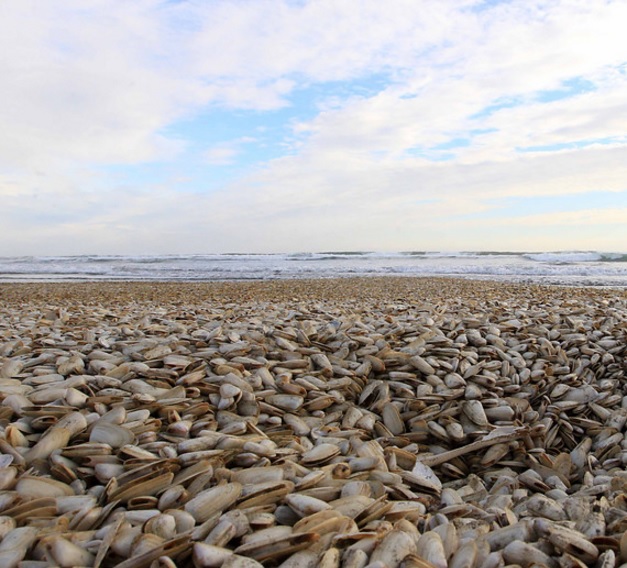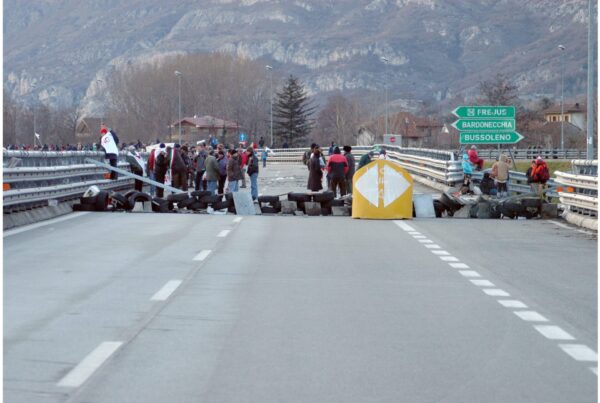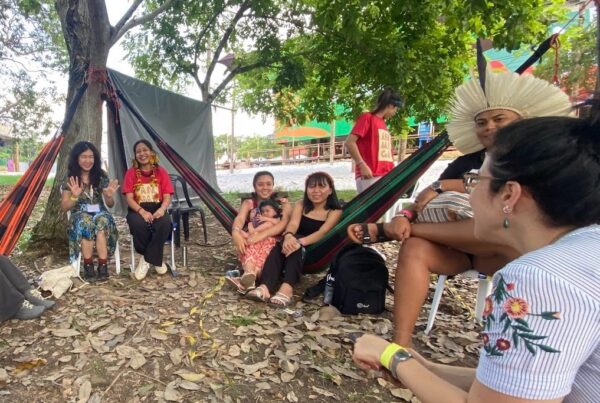By Beatriz Bustos and Felipe Irarrázaval*
The recent social and environmental crisis in Chiloé, Southern Chile, triggered by a massive marine life disaster, stems from a long-standing territorial disarticulation between the state, the salmon industry and local communities when implementing regional development.

Red tide (marea roja) in Chiloé. Source: theclinic.cl
Over the past month, people in Chiloé Island (Los Lagos region, Southern Chile) have been struggling against the effect of two separate but consecutive and devastating algae bloomings. The first one (Chattonella marina) occurred in March 2016, affecting mainly the salmon industry. Nearly 40,000 tons of dead biomass had to be disposed in a short period of time to avoid mass contamination. This then led to a sanitation crisis as there were not enough waste sites to handle the biomass. As a result, the Chilean Fishing Authority disposed 4,600 tons of it in an underwater hole 70 kms from Ancud city, in Chiloé.
One month later, in April, 2016, a second algae blooming (Alexander chattonella) associated with the red tide (marea roja) phenomenon affected the coast of the Los Lagos region, forcing the authority to forbid consumption and extraction of shellfish – the second largest income source for local coastal communities in the region. The government immediately established a state of emergency to allocate resources – in the form of subsidies – to the affected families: a single payment of approximately US$ 230 per family, later improved to US$1,000 over three installments. But the regional communities rejected the payments, and what appeared to be a conflict over compensation turned into the largest social conflict in the Los Lagos region.

Women from Carelmapu village march in the blockade. Source: elmostrador.cl.
In recent decades, the Los Lagos region has become a commodity region, one whose economy is based on the exploitation and export of a single commodity – salmon. Its economic cycle is marked by moments of boom and crisis associated with the expansion of production and demand from global markets; or conversely, lower global demand or events of environmental degradation affecting production.
During the expansion of the industry in the 1990s and early 2000s, Chiloé experienced uncontrolled urban growth, migration, and marketization processes, among other phenomena. The latest moment of crisis (before the current algae blooming) was in 2007 with the emergence of the ISA (Infectious salmon anemia) virus outbreak, which killed 97% of salmon stocks, and seriously threatened the viability of the industry.
We argue that the origin of citizens mistrust in the government derives from how the government reacted during that crisis: first, the political decision was that the industry was too big to fail, so monetary compensation was directed to the industry (not to the local communities who were made redundant). Second, institutional reforms were implemented to make sure the industry survived, increasing institutional burden in related activities such as artisanal fishermen or mussel farming but avoiding establishing a salmon workers bill of rights as was demanded at the time. Third, decisions were made without regional or local authorities or leaders.
Ultimately, the ISA crisis exposed the fragility and ecosystemic dependence of the industry, the high level of environmental degradation on the marine ecosystems of the region, and the end of the promise of material well-being and prosperity that the salmon industry represented.
Since 2007, the industry has not yet fully recovered from the ISA crisis, and due to lower prices on the global market, the industry has faced higher production costs, associated with the sanitary measures imposed by the state after the crisis. The more recent algae blooming of March also exposed the socio-ecological fragility of the industry, which has been struggling with many aquatic diseases (and high mortality rates), and a consequent loss of 4,000 jobs in April 2016.
The resulting state of emergency established by the national government, and the lack of empathy showed by the authorities triggered a strong reaction from the regional communities. Yet, as mentioned above, the conflict is not only about the amount of compensation, but also about the communities’s opposition to the industry and its significant socio-ecological implications.

Locals from Castro city (Chiloé’s capital) demonstrate against the government proposal. Source: Movimiento Defendamos Chiloé.
In what follows we explain 3 dimensions that in our understanding are useful to understand the conflict.
1. State-Industry and community relationships
During the ISA crisis the communities developed a profound mistrust of the state and the industry. To the communities, the state is not an impartial actor, but has sided with the industry, so now they no longer believe the scientific or technical information provided by the state. For instance, during the ISA crisis, the state chose to finance industry recovery instead of alternative community development projects.
2. Community-industry relationship
The salmon industry has been historically targeted for anti-union practices and labor issues. Currently, labor is the main connection between the industry and the communities, but the jobs available are precarious, underpaid, seasonal, and are shift-based. Furthermore, salmon firms now look for skilled workers, who must be able to move more than 200 kilometers to their new working places.
Such requirements do not fit with the rural communities’ interests. Although some salmon firms have begun to develop social responsibility plans, i.e. aspiring for ASC certifications, local communities state that the salmon industry is no longer a source of jobs, but instead has several negative impacts on the local environment.
3. State-community relationship
The community-state relationship has been shaped by two issues: labor and access to resources.In terms of labor, the salmon industry saw unemployment rates rise during the ISA crisis. This added to the historical labor deficiencies of the industry, including the anti-union practices, and the high number of deaths caused by labor accidents.
However, after the ISA crisis, the state provided the industry with US$450 million to fund its recovery, and a smaller amount to support emergency jobs during the height of the crisis. This was done instead of pushing forward a special law for salmon workers, which was a historical demand from the unions. Even though the government never gave the money to the industry (because the 2010 earthquake changed the budget priorities), the government decision to support the industry instead of the local community never has been forgotten.
In terms of access to resources, during the 1990s the government introduced a series of legal mechanisms, which created obstacles to direct access to the sea. Traditionally, local people could rely on fishing in the face of unemployment, but now all fishermen must hold a valid ID granted by the state (known as the Artisanal Fishermen Registry), which assigns a fixed quota of catches.

Barricades on the Panamerican highway in Maullín city. Source: elmostrador.cl.
On 19 May 2016 the movement ended when communities from the city of Ancud reached an agreement with the government over a monthly bonus of US$450 for three months to a population of around 5,500 people. Although the material necessities are extremely important for the local community in this moment, it is absolutely necessary that regional and national authorities take a long-term vision, which considers communities’ demands to move toward a more articulated and environmentally conscious development in Chiloé.
The extended version of this blog post was published in Spanish in “El Mostrador”.
* Beatriz Bustos is Assistant Professor at the Department of Geography, University of Chile. She holds a Ph.D in Geography from Syracuse University.
* Felipe Irarrázaval is Research Assistant at the Center for Sustainable Urban Development (CEDEUS, Centro de Desarrollo Urbano Sustentable) in Santiago de Chile. He holds a Master in Political Science from the University of Chile.






2 Comments